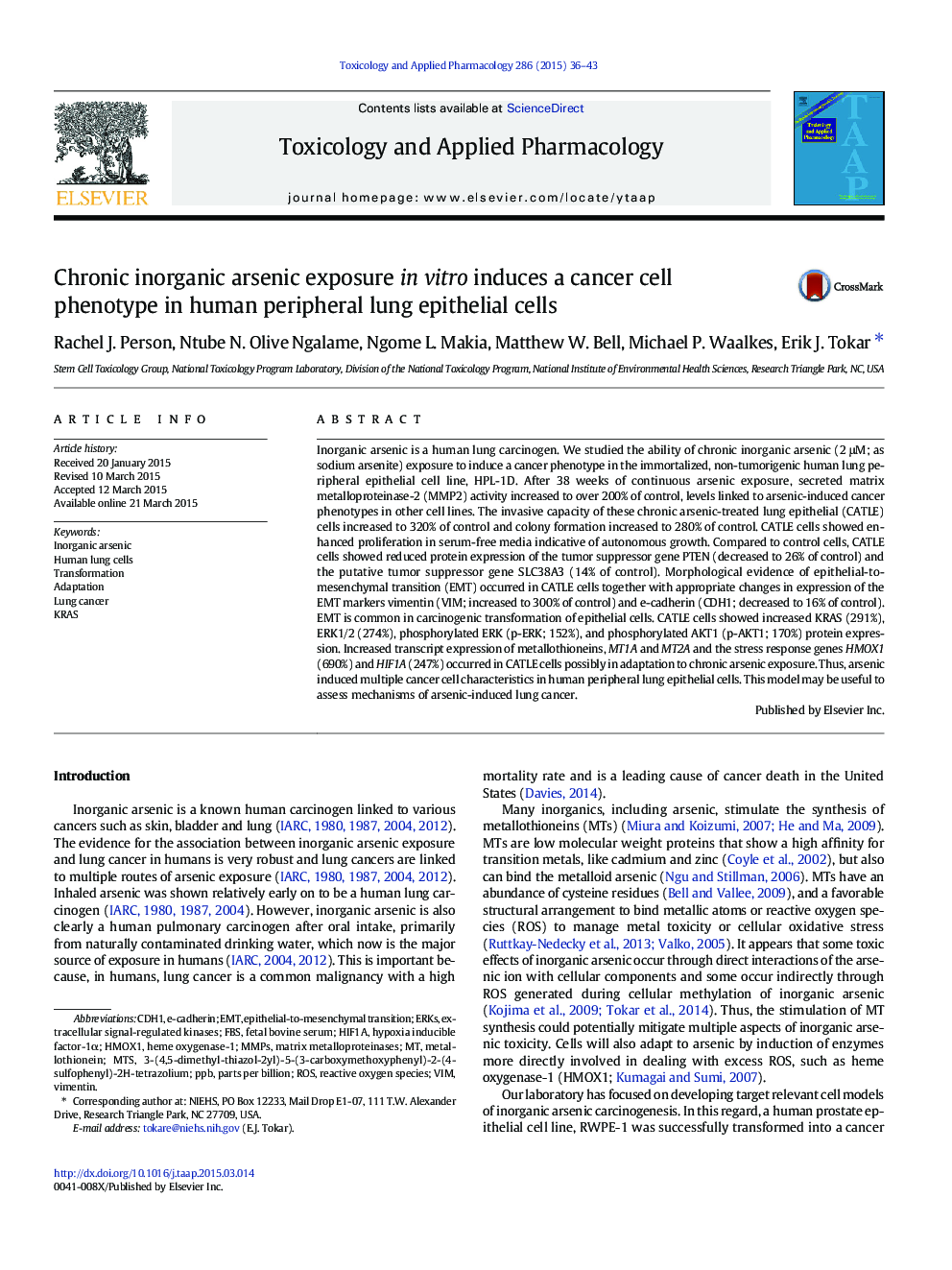| کد مقاله | کد نشریه | سال انتشار | مقاله انگلیسی | نسخه تمام متن |
|---|---|---|---|---|
| 2568357 | 1128435 | 2015 | 8 صفحه PDF | دانلود رایگان |
• Chronic arsenic exposure transforms a human peripheral lung epithelia cell line.
• Cells acquire characteristics in common with human lung adenocarcinoma cells.
• These transformed cells provide a valuable model for arsenic-induced lung cancer.
Inorganic arsenic is a human lung carcinogen. We studied the ability of chronic inorganic arsenic (2 μM; as sodium arsenite) exposure to induce a cancer phenotype in the immortalized, non-tumorigenic human lung peripheral epithelial cell line, HPL-1D. After 38 weeks of continuous arsenic exposure, secreted matrix metalloproteinase-2 (MMP2) activity increased to over 200% of control, levels linked to arsenic-induced cancer phenotypes in other cell lines. The invasive capacity of these chronic arsenic-treated lung epithelial (CATLE) cells increased to 320% of control and colony formation increased to 280% of control. CATLE cells showed enhanced proliferation in serum-free media indicative of autonomous growth. Compared to control cells, CATLE cells showed reduced protein expression of the tumor suppressor gene PTEN (decreased to 26% of control) and the putative tumor suppressor gene SLC38A3 (14% of control). Morphological evidence of epithelial-to-mesenchymal transition (EMT) occurred in CATLE cells together with appropriate changes in expression of the EMT markers vimentin (VIM; increased to 300% of control) and e-cadherin (CDH1; decreased to 16% of control). EMT is common in carcinogenic transformation of epithelial cells. CATLE cells showed increased KRAS (291%), ERK1/2 (274%), phosphorylated ERK (p-ERK; 152%), and phosphorylated AKT1 (p-AKT1; 170%) protein expression. Increased transcript expression of metallothioneins, MT1A and MT2A and the stress response genes HMOX1 (690%) and HIF1A (247%) occurred in CATLE cells possibly in adaptation to chronic arsenic exposure. Thus, arsenic induced multiple cancer cell characteristics in human peripheral lung epithelial cells. This model may be useful to assess mechanisms of arsenic-induced lung cancer.
Journal: Toxicology and Applied Pharmacology - Volume 286, Issue 1, 1 July 2015, Pages 36–43
